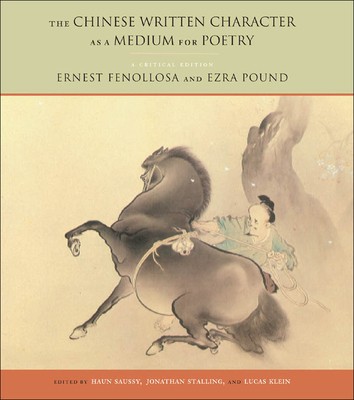
- We will send in 10–14 business days.
- Author: Ernest Fenollosa
- Publisher: Fordham University Press
- ISBN-10: 082322869X
- ISBN-13: 9780823228690
- Format: 19.8 x 22.6 x 1.5 cm, minkšti viršeliai
- Language: English
- SAVE -10% with code: EXTRA
The Chinese Written Character as a Medium for Poetry (e-book) (used book) | bookbook.eu
Reviews
Description
First published in 1919 by Ezra Pound, Ernest Fenollosa's essay on the Chinese written language has become one of the most often quoted statements in the history of American poetics. As edited by Pound, it presents a powerful conception of language that continues to shape our poetic and stylistic preferences: the idea that poems consist primarily of images; the idea that the sentence form with active verb mirrors relations of natural force. But previous editions of the essay represent Pound's understanding--it is fair to say, his appropriation--of the text. Fenollosa's manuscripts, in the Beinecke Library of Yale University, allow us to see this essay in a different light, as a document of early, sustained cultural interchange between North America
and East Asia.
EXTRA 10 % discount with code: EXTRA
The promotion ends in 23d.10:21:40
The discount code is valid when purchasing from 10 €. Discounts do not stack.
- Author: Ernest Fenollosa
- Publisher: Fordham University Press
- ISBN-10: 082322869X
- ISBN-13: 9780823228690
- Format: 19.8 x 22.6 x 1.5 cm, minkšti viršeliai
- Language: English English
First published in 1919 by Ezra Pound, Ernest Fenollosa's essay on the Chinese written language has become one of the most often quoted statements in the history of American poetics. As edited by Pound, it presents a powerful conception of language that continues to shape our poetic and stylistic preferences: the idea that poems consist primarily of images; the idea that the sentence form with active verb mirrors relations of natural force. But previous editions of the essay represent Pound's understanding--it is fair to say, his appropriation--of the text. Fenollosa's manuscripts, in the Beinecke Library of Yale University, allow us to see this essay in a different light, as a document of early, sustained cultural interchange between North America
and East Asia.


Reviews